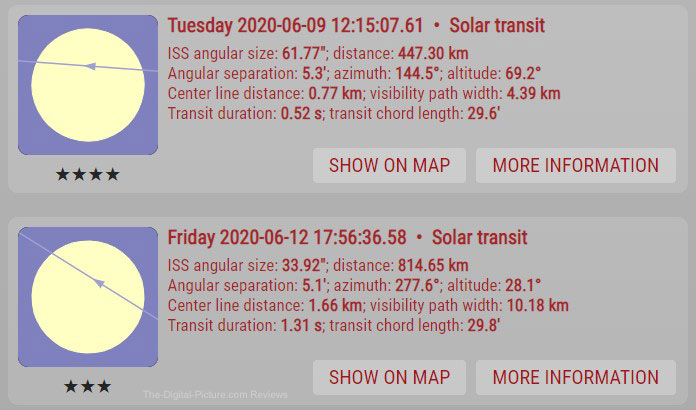International Space Station Solar Transit
Sean's recent Filming an ISS Transit of the Moon article reminded me to check for an upcoming locally-viewable International Space Station transit. Amazingly, there were two ISS solar transits scheduled for the next week, with my back yard being the perfect location for the alignment I wanted for both transits.

Sean's How to Photograph an International Space Station Lunar Transit article was directly applicable, with a solar filter being an additional requisite.
Only the sun was going to be illuminated in the frame, and the space station is especially small. I combined the longest focal length lens combination I have, the Sony FE 600mm f/4 GM OSS Lens and Sony FE 2x Teleconverter, with the highest resolution ILC camera available, the Sony a7R IV. This combination was then mounted to the most solid tripod and head in my kit, the Wimberley WH-200-S Sidemount Head on a Robus RC-8860 Vantage Carbon Fiber Tripod.
The ISS moves across the sky very rapidly, leading me to select a 1/2000 shutter speed to avoid motion blur. With the transit duration predicted to be a mere 0.52 seconds, timing the shot was crucial. From testing, I knew this camera with a V60 SDXC card loaded would capture an over-four-second burst before the buffer filled. At just under two seconds before the transit start time, I pressed and held the release button on the Vello ShutterBoss Remote Switch.
The a7R IV's high speed+ mode netted three images that included the ISS in front of the sun. That count seemed a little weak in the composite (the space stations were "spaced" too far apart), so some additional space stations were cloned into the final image.
ISO 1600
5426 x 3617px

